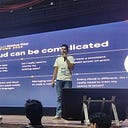Six Tips for Writing More Effective Emails
Start with the key information.
Unlike academic writing, where background information builds up to a conclusion, emails should lead with the main point. Clearly state your call to action or primary message in the first paragraph, making it easy for readers to know what you want them to do.
Write an informative subject line.
A descriptive subject line helps recipients prioritize your email among many others. For example, “Kaizen team offsite — register this week” is more effective than “Team offsite,” as it indicates required action and a deadline.
Use visual structure to enhance readability.
Break up your email into sections using headings, bullet points, and bold text to make it easy to scan. This helps readers quickly identify important information without having to read every word. However, use formatting sparingly to avoid overwhelming your audience.
Eliminate unnecessary words.
Streamline your message by removing any paragraphs, sentences, or words that don’t contribute to your email’s main purpose. This saves your readers’ time and helps them focus on the essential details.
Avoid jargon and provide context.
Use simple language, spell out acronyms, and include necessary context to ensure your email is easy to understand. Don’t make readers struggle with industry-specific terms or unfamiliar references.
Get a second opinion.
Have someone outside your team review your draft for clarity, grammar, and overall content. An outside perspective can help identify areas that need more explanation or clearer wording.
